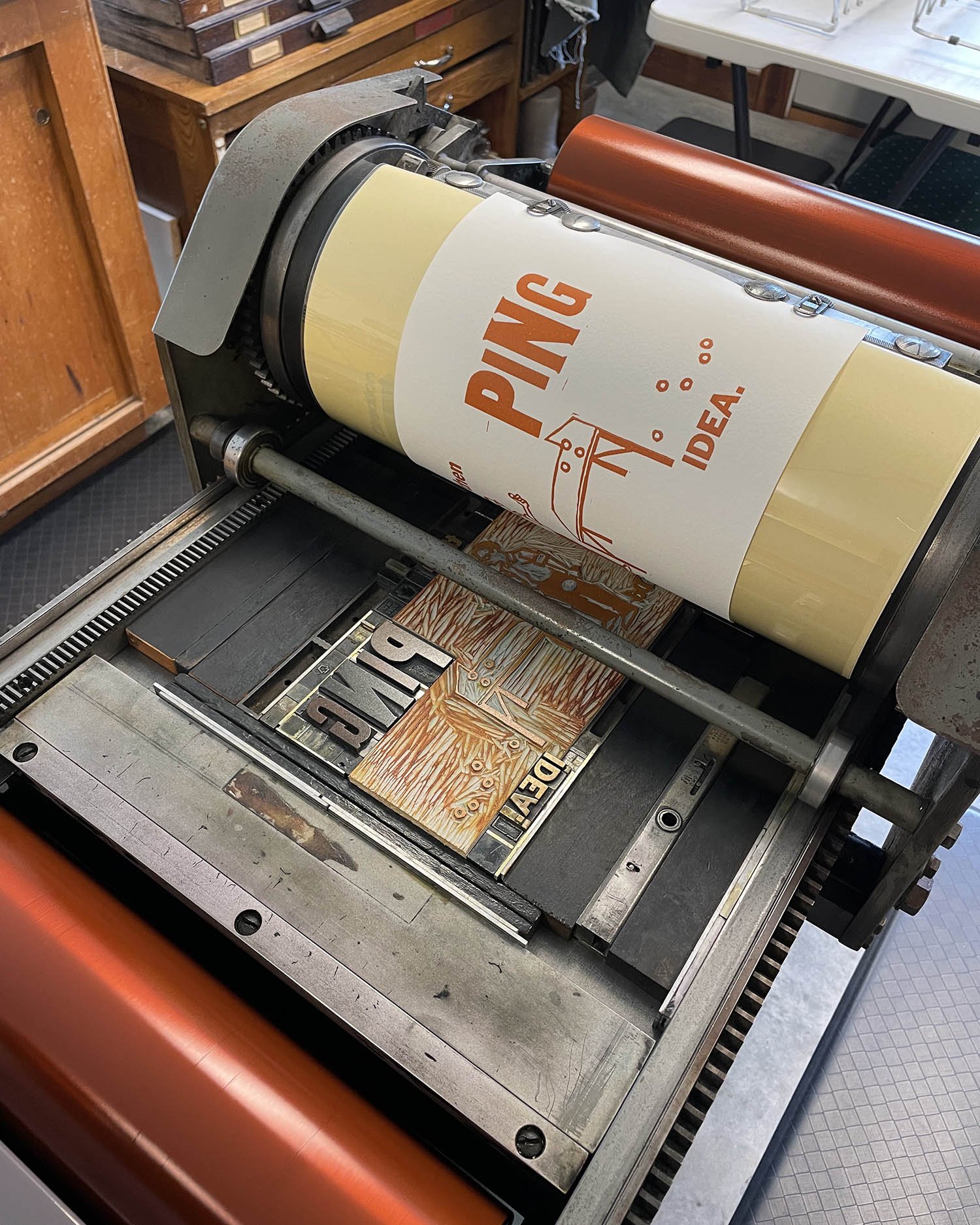
Artistic Collaboration with Cartoonist Drew Dernavich
Nesja Press and New Yorker cartoonist, Drew Dernavich, have teamed up to create a series of limited edition, letterpress art prints based on Drew's original cartoons. Working together we reimagine Drew's black and white cartoons in fresh ways, adding color and playful typography that really packs a punch. Shop the prints below, or scroll down to read about our collaborative working process.
Our Collaborative Working Process
STEP 1
Drew transfers his cartoon drawings onto linoleum blocks and carves them.
The images are drawn and carved in reverse so they will print “right reading,” a requirement for relief printing. Before shipping the blocks to Nesja Press, Drew proofs his carvings with an ink brayer and paper.
STEP 2
Christy designs the typography and experiments with color.
Various metal and wood type is selected that might work with Drew’s image. Christy scans proofs of the type into her computer, as well as proofs of Drew’s linocuts. She works in a digital file to experiment with different typefaces, compositions and colors. After a few rounds of digital proofs we agree on a design we like.
STEP 3
The type lockup is planned for each ink color.
Each ink color requires it’s own “lockup” in the press bed. Sometimes the lock-up is only an image, or only type. Sometimes it’s a combination of both. When image and type are combined, this may require a linocut block to be notched with a bandsaw, allowing the type to sit closer to an image.
STEP 4
Test prints are made.
Ink colors, paper choice, and the exact alignment of type and images all needed to be tested on press. With different amounts of packing under the block carvings we can achieve different shades of ink. With more packing, we see more carving marks in some areas than we want. Christy and Drew make notes on the test prints and share likes and dislikes with each other via snail mail.
STEP 5
The first ink color is printed.
In letterpress printing, only one color can be printed at a time. We printed Ping on our Vandercook SP15 cylinder proofing press, starting with the rust color. Each piece of paper was placed under the paper grippers on the cylinder. Using a hand crank, the cylinder carriage was moved across and over the press bed, and that’s where the impression was made.
STEP 6
The second color is printed.
Green ink was printed as the second color. A few test prints were run to ensure proper alignment with the rust color, and then we went into production mode completing our series of prints.
The back story: how we met Drew
Our collaboration with Drew Dernavich came through Paul Nesja’s role as a co-host on The New Yorker Cartoon Caption Contest Podcast. Drew had been a guest on the pod a few times, and because his cartoon style looks similar to a woodcut style, the subject of printmaking came up. Paul mentioned that he and his wife, Christy Nesja, had a letterpress printing studio and antique printing presses. Drew said he’d love to own a letterpress, but he didn’t have room at his place in New York.
After the podcast Paul contacted Drew to say we’d be happy to work with him if he wanted to try something with our press. He was very intrigued by the idea of recreating one of his cartoons as a relief print. Christy and Paul thought Drew would provide an image of a cartoon, we would typeset his supplied caption underneath in a traditional format, and then print them. Drew had much more imaginative ideas in mind! He helped us understand that he was looking for something radically different. He envisioned one of his original black and white cartoons in color with a caption that integrated with the image. Drew liked the way Christy used handset type in non-traditional ways, and he wanted that look to be part of the prints.












